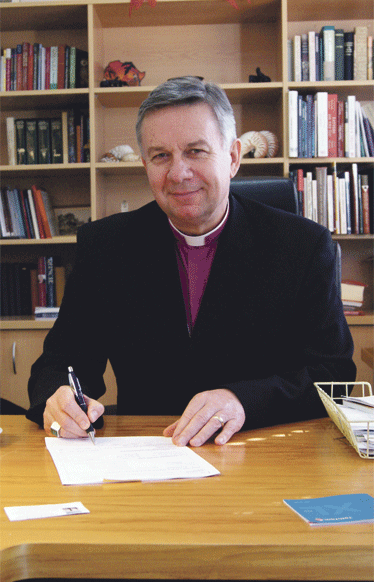 Feature
Feature
Peter Veugelaers
JRR Tolkien, author of The Lord of the Rings and The Hobbit, used to say that his Catholic faith was implicit in his stories.
The Archbishop of Canterbury’s representative to the Holy See, Palmerston North-born Archbishop David Moxon, has made a study of Catholicism’s influence on the writer.
‘As time went on, [Tolkien] realised how much a part of his work Catholicism had become. He agreed that Lady Galadriel was an echo of Mary the mother of Jesus. It has been said that the lembas bread of the hobbit journey in The Lord of the Rings, which fed the will as well as the body, was an echo of the bread of the Mass, and so on, in many other ways.’
For Tolkien, whose The Hobbit, which film director Sir Peter Jackson is making into a trilogy of films, the character of Radagast probably derives from some principles that were embodied in St Francis of Assisi and Peter Jackson works this into a graphic and plot-changing role in Franciscan terms, he says.
Archbishop David who, as director of the Anglican Centre in Rome, has beaten his NZ Catholic counterparts to an audience with Pope Francis, says Radagast is obscure in the book, but becomes much more significant and powerful in the movie, while keeping an authentic representation of who he was and what he did in the world.
This highlights in Tolkien how stories can be personalised.
‘Stories can be powerful agents of transformation if we take them seriously and identify with some of the people or the events in them,’ says Archbishop David.
‘When we identify this way, we are letting the story speak to our own personal story in a powerful way. It can pick up a theme in our lives and give it a new turn or a fresh expression and so shape us, or even drive us for a time. That is why a good story is so important, because it can “read” us.’
Our experience of The Hobbit could be how Archbishop David describes the story.
‘The supreme value of restorative justice, of courage even when the odds are stacked against you and the primacy of hope, even when all seems hopeless,and the fact that, even though we make serious miscalculations and acts of selfishness and greed, we can recover our lost humanity and dignity.
‘We can rise again into new forms of generosity and can grow in kindness and understanding through adversity. When we do this some mighty force comes to our assistance.
‘I think Tolkien expressed what is called in Catholicism a “natural theology” meaning he believed that the God who made everything and is an invisible presence behind and within all life, was reflected however dimly, in the things that God created.
‘Nature can be red in tooth and claw and the world can be horribly marred, but nevertheless the sacred gift of life itself and its instinct to be interdependent, to cooperate and create, are signs of the divine image within us, even if we don’t know this, and even when we fall and sin. The gift of life goes on and redemption and salvation are always being offered and always abounding and growing, no matter what.
‘I think this approach is found in some seminal Anglican thinking as well, including people like Richard Hooker and Rowan Williams. So I warm to Tolkien’s Catholic faith in this sense, even though there would be some things we might not agree on.’